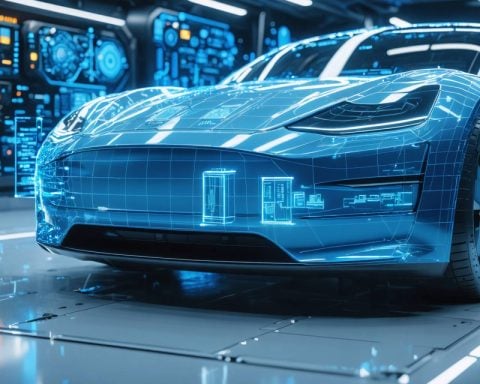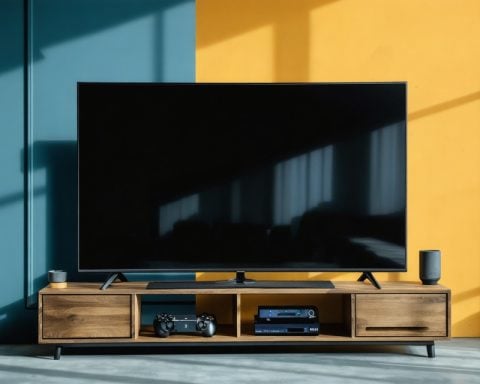In a surprising move, Casio, widely recognized for its watches and calculators, is delving into a new market with the introduction of robotic pets. The company recently unveiled “Moflin,” an AI-enabled, hypoallergenic pet designed to provide comfort and companionship. According to Casio’s announcement on October 10th, Moflin aims to create a profound emotional bond with its owner.
Currently available for pre-orders in Japan, the Moflin will officially debut on November 7th. This device, reminiscent of a small, earless rabbit, is available in gold or silver fur. A promotional video depicts how Moflin seamlessly fits into daily life, offering soothing interactions for both stress relief and relaxation. Although it does not walk, its subtle, lifelike movements distinguish it from previous mechanical pet attempts.
The Moflin project originated as a Kickstarter initiative by Vanguard Industries in 2021. Its success caught the eye of Casio, prompting the company to support and promote this 59,400 yen (approximately $400) venture. Additionally, the product is accompanied by a “MofLife” app, enhancing user interaction through a range of subscription services.
Moflin’s interaction system is built around voice and gesture recognition. With continued interaction, owners can cultivate a deeper connection over months, resulting in Moflin responding with emotional gestures. Initial encounters might find Moflin’s movements and sounds immature, but significant development occurs over 50 days, offering over four million movement-and-sound combination possibilities.
Despite its charming features, Moflin has a few limitations. Its battery life is five hours, requiring a 3.5-hour recharge period. Nevertheless, owning a Moflin might be a cost-effective, stress-reducing alternative for those unwilling or unable to care for a live pet. Only time will reveal whether Moflin will reach the iconic status of toys like the Furby.
The Rise of AI Companions: How Robotic Pets Like Moflin are Shaping Society
The advent of robotic pets is a phenomenon that is quietly revolutionizing how individuals and communities interact with technology and experience companionship. Products like Casio’s new “Moflin” are at the forefront of this movement, offering a glimpse into a future where artificial intelligence (AI) and human emotions intertwine in unprecedented ways.
Why Robotic Pets Matter
Robotic pets like Moflin are not just technological novelties; they are providing tangible benefits in everyday life. In a world where loneliness and mental health challenges are increasingly prevalent, Moflin’s ability to offer emotional and psychological relief is noteworthy. Its AI-driven responses and interactions mimic a living pet’s companionship, potentially bridging gaps in human socialization, especially among isolated groups such as the elderly or those with disabilities.
Interesting Facts and Figures
1. Population Growth and Pet Ownership: As urban environments become more populated and living spaces decrease in size, owning traditional pets becomes less feasible. Robotic pets offer a viable alternative, requiring minimal maintenance while providing similar companionship benefits.
2. Hypoallergenic Benefits: Unlike live animals, robotic pets are hypoallergenic, broadening the potential user base to those who suffer from pet allergies but yearn for a companion’s presence.
3. Economic Impact: The market for robotic companions is projected to grow significantly, with some forecasts estimating the industry could be worth billions of dollars in the coming years. Companies like SoftBank Robotics are already advancing in this arena, demonstrating the economic potential and demand for robotic companions.
Controversies and Challenges
Despite their advantages, robotic pets also raise several controversies and ethical questions. Critics argue that these devices might further erode genuine human connection by substituting artificial interactions for real ones. There’s also concern over data privacy with AI-powered devices that collect user data to function autonomously.
Moreover, the effectiveness of robotic pets in substantially improving one’s mental health remains a topic of debate and scrutiny. While initial studies may show promise, long-term impacts are yet to be fully understood and require more comprehensive research.
Community and Cultural Implications
The adoption of robotic pets might influence broader societal changes. Communities could see shifts in pet-related industries, from veterinary services to traditional pet retail, as demand for live animals potentially decreases. On a cultural level, the normalization of robotic companionship could redefine how relationships and emotions are conceptualized in an increasingly digitized world.
The Future of AI Companionship
Robotic pets like Moflin are emblematic of an ongoing shift toward AI-integrated daily life. As technology continues to evolve, these companions will likely gain more sophisticated features, blurring the lines between synthetic and organic companionship. How society adapts and embraces these innovations will shape cultural and economic landscapes for years to come.
Overall, while robotic pets may not wholly replace the joy and complexity of caring for a living creature, they offer an intriguing, ethical alternative for those seeking companionship in a modern world. As they gain popularity, continuous dialogue is essential to address potential ethical dilemmas and ensure these companions serve humanity positively.
The article has been updated: 2024-11-06 09:48
Here are some suggested related links to include in your post about Casio’s venture into robotic pets with Moflin:
1. Casio Official Website – Explore Casio’s range of innovative products and technology, including their latest ventures in robotics.
2. Robotics Business Review – Stay updated with news and insights from the robotics industry, including trends in robotic pets and consumer robotics.
3. TechCrunch – Follow technology news and analysis, including the latest innovations in consumer electronics and robotics.
4. The Verge – Discover articles on the intersection of technology and culture, with coverage on new tech gadgets and advancements in robotics.
5. Engadget – Read in-depth reviews and news related to technology and the latest in consumer gadgets, including robotic innovations.
6. Wired – A source for in-depth reporting on technology, including features on robotics and emerging tech trends that shape our world.
7. Robots.com – A comprehensive resource for everything related to robotics, offering news, insights, and information about robotic pets and their impact on society.
The article has been updated: 2024-11-06 22:06
What features make Casio’s Moflin a standout product in the robotic pet market?
Casio’s Moflin distinguishes itself in the robotic pet market through several innovative features. Firstly, it uses advanced artificial intelligence to exhibit lifelike behaviors and responses, allowing it to express a range of emotions similar to a real pet. Moflin is also equipped with sensors that enable it to interact with its environment, making it more engaging and responsive to users’ actions. Additionally, its unique design is focused on creating a comforting and adorable presence, resembling a small, furry creature that can bring joy to families and individuals alike. Moflin’s ability to learn and adapt to its owner’s preferences over time further enhances its appeal as a companion, making it not just a toy, but a meaningful extension of the user’s daily life.







